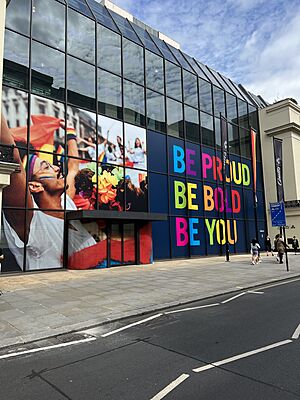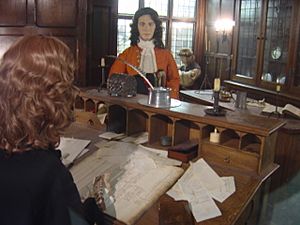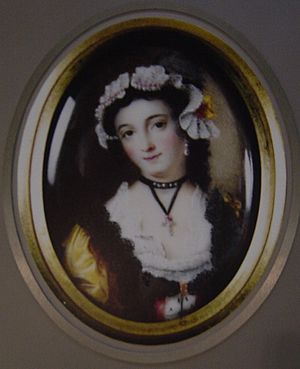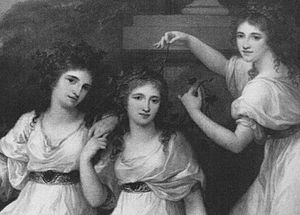Coutts facts for kids
 |
|

Strand headquarters of Coutts in June 2022
|
|
| Subsidiary | |
| Industry | Private banking and wealth management |
| Founded | May 1692 |
| Headquarters | 440 Strand London, WC2 United Kingdom |
|
Key people
|
|
| Products | Wealth management – accounts, investments, lending, deposits |
| Revenue | |
|
Operating income
|
|
| AUM | |
| Total equity | |
|
Number of employees
|
2,296 (2024) |
| Parent | NatWest |
Coutts & Company (pronounced koots) is a special kind of bank in London, England. It's known as a private bank and wealth manager, which means it helps wealthy people manage their money and investments.
Coutts was started way back in 1692, making it one of the oldest banks still operating in the world. Today, it is part of the NatWest Group, a larger banking company. Coutts also has a special certification called B-Corp status, which means it meets high standards for being good for people and the planet.
Contents
The Story of Coutts Bank
How It All Started
The bank began in 1692 when a young Scottish goldsmith and banker named John Campbell opened a shop in London. Back then, shops often used signs instead of numbers, and Campbell's shop had a sign of the Three Crowns. Even today, the Coutts logo still features these three crowns, and its main office is still on the same street, the Strand.
When John Campbell passed away in 1712, his family members took over the business. His son-in-law, George Middleton, became a key leader. During this time, the bank faced some tough challenges, like financial problems across Europe. But by 1735, things became stable again.
In 1755, John Campbell's granddaughter, Mary, married a banker named James Coutts. James quickly became a partner, and the bank was called Campbell & Coutts. After Mary and George passed away, James became the sole owner.
Thomas Coutts Takes the Lead
In 1761, James brought his brother Thomas Coutts into the business, and it was renamed James and Thomas Coutts. However, the brothers didn't always agree, and James eventually left the bank to focus on politics. In 1775, Thomas took full control, and the bank became Thomas Coutts & Co.
Under Thomas's leadership, the bank grew a lot. He brought in new partners, and the bank's profits increased significantly. The main building on the Strand was also rebuilt and made much bigger.
Thomas Coutts was married twice. His first wife, Susannah Starkie, had three daughters who were nicknamed "The Three Graces." These daughters married important people in British society. After Susannah died, Thomas, at 80 years old, married a much younger actress named Harriot Mellon. This caused quite a stir! When Thomas died in 1822, the bank was simply called "Coutts & Co."
Harriot inherited a large sum of money and half of the bank. She wanted to keep the bank in the Coutts family. When she died in 1837, she left her fortune to Thomas's granddaughter, Angela Burdett. Her will had three rules: Angela's share of the bank had to be held in a special fund, she had to take the name Coutts, and she could never marry a foreigner.
Angela Burdett-Coutts: A Generous Leader
Angela Burdett-Coutts, 1st Baroness Burdett-Coutts When Angela Burdett-Coutts received her inheritance, she became the richest woman in Britain. She decided to use her wealth to help others, giving away millions of pounds to charity. She supported churches, arts, and especially projects to improve the lives of poor people. She helped set up sewing schools, provided fishing equipment, and supported schools for children in need.
Because of her amazing charity work, Queen Victoria and the Prime Minister, Gladstone, honored her. In 1871, she was given a special title: Baroness Burdett-Coutts.
Later, in 1880, Angela decided to marry her young American secretary, William Ashmead-Bartlett. He was 37 years younger than her. Many people, including the bank partners and even Queen Victoria, were worried about this marriage. They thought he was only interested in her money. Also, her step-grandmother's will said she couldn't marry a foreigner, or she would lose her inheritance.
Angela's younger sister, Clara, was supposed to inherit if Angela broke the will. But Angela convinced Clara to give up her rights. However, Clara's son, Frank, was not happy and tried to stop the marriage. Despite all the pressure and rumors, Angela was determined.
In February 1881, at 67 years old, Angela married Bartlett. This broke the terms of the will. A big argument started over the inheritance. Angela argued that Bartlett was only half American, so he wasn't fully a "foreigner." Clara then claimed the fortune, and the dispute continued. Eventually, they reached a compromise: most of the Coutts fortune would go to Clara and her children, but Angela would keep some income until she died in 1906.
Clara and her son Frank took the name "Coutts" as required by the will. Frank became a writer and poet, known as Francis (or Frank) Coutts.
Around the end of the 1800s, there was a financial downturn. This led Coutts to change from a partnership to a company in 1892. This change helped protect the owners from being personally responsible for all the bank's debts during a crisis.
Growing and Modernizing

In 1904, Coutts moved to its current main office at 440 The Strand. The bank continued to grow, taking over other banks and opening more branches across London and other cities like Eton and Bristol.
Coutts was also quick to adopt new technology. In the late 1920s, it was one of the first banks to use machines for keeping records. By 1963, it was the first British bank to have a fully computerized accounting system.
In 1969, Coutts became part of the National Westminster Bank, which later became NatWest Group.
In 1987, Coutts started to expand internationally, opening offices in places like Geneva, Switzerland. The Coutts Group was formed in 1990 to bring together its international businesses.
Coutts in the 21st Century
In 2000, the Royal Bank of Scotland Group bought NatWest, which included Coutts. The Royal Bank of Scotland Group later changed its name to NatWest Group in 2020.
Coutts continued to grow its international business for a while. However, in 2015, Coutts sold its international branches in Europe, the Middle East, Singapore, and Hong Kong to a Swiss bank. This was part of NatWest Group's plan to focus more on its business in the United Kingdom.
In 2022, another bank called Adam and Company transferred its banking business to Coutts. In 2023, Lord Remnant became the new Chairman of the Board for Coutts.
How Coutts is Run
The bank's board is led by a chairman, currently Lord Remnant. There are also several non-executive directors who help guide the company.
Where Coutts is Located
The main office of Coutts is at 440 Strand, London. Over the years, Coutts has closed some of its smaller offices in London to focus its services.
As of 2025, Coutts has offices in 19 cities across the United Kingdom. In many of these places, Coutts shares offices with its parent company, NatWest. While Coutts used to have many international offices, it now mainly focuses on the UK.
Who Are Coutts' Clients?
For a long time, Coutts mainly served noble families and landowners. But over the years, it started helping a wider range of wealthy clients, including business owners, entertainers, athletes, and professionals. The British Royal Family are also well-known clients; the bank was sometimes called "the Queen's bank."
To become a client at Coutts, you need to meet certain financial requirements. For example, in 2022, potential clients were asked if they wanted to borrow over £1 million or use the bank's investment advice for assets over £1 million.
The Captain Tom Foundation is also a client of Coutts.
Design and Style
Coutts often works with famous British fashion designers to create unique designs for its credit and debit cards. For example, in 2004, designer Ozwald Boateng designed the special Coutts World Charge Card. In 2006, Stella McCartney designed the Coutts Visa debit card, which had a special see-through logo.
In 2013, Coutts introduced the new 'Silk' Charge card. Its design was inspired by traditional Chinese wallpaper that decorates the boardroom at the bank's headquarters.
The large glass area at Coutts' London headquarters is also used for various displays. These displays celebrate important events, like the passing of Elizabeth II, and public events such as the annual Pride in London march.
Sponsorships
Coutts supports organizations that share its values. For example, Thomas Coutts was an early supporter of what is now the Royal Opera House, and Coutts continues to be a major supporter. Coutts has also sponsored the Royal Court Theatre and the London Design Festival. In 2020, Coutts became the first company to sponsor Queer Britain, a museum about LGBTQ+ history.
See also
- C. Hoare & Co




